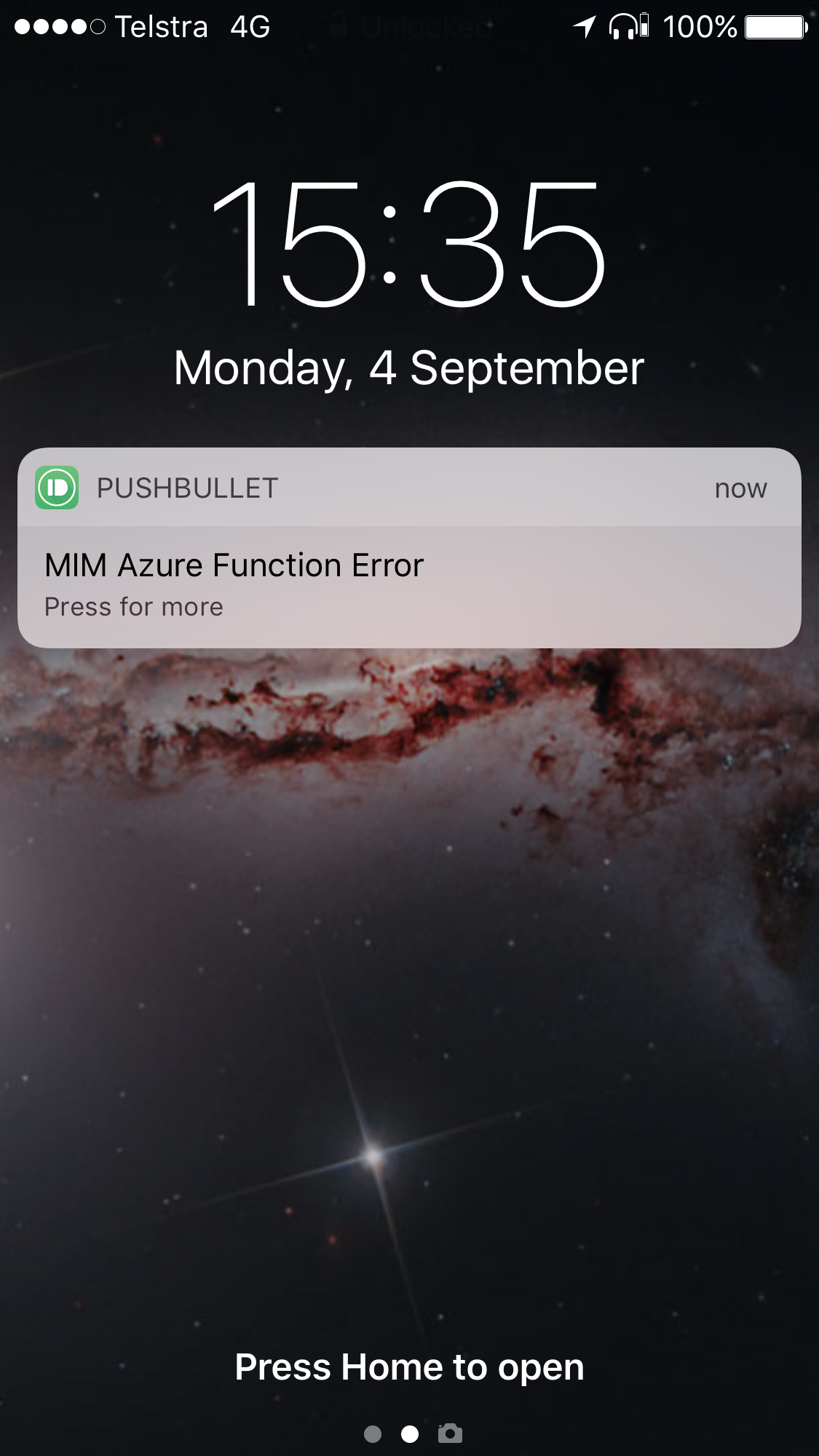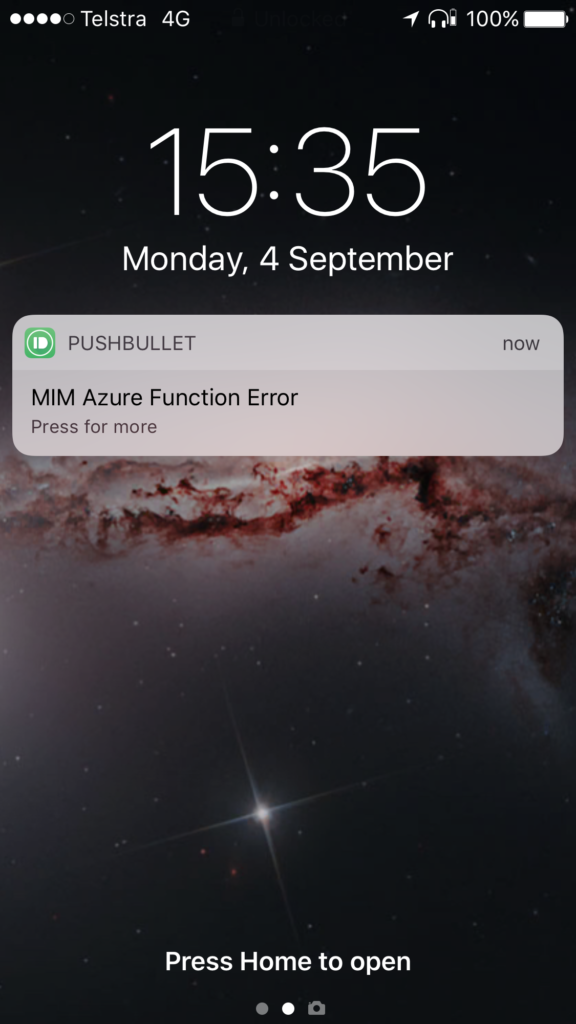
Background
Recently in a FIM/MIM environment a daily automated process was executing but the task it was performing was dependent on an upstream process that generates a feed, and the schedule for that feed had changed (without notice to me). Needless to say FIM/MIM wasn’t getting the information it needed to process. This got me thinking about notifications.
If you’re anything like me you probably have numerous email accounts and your subconscious has all but programmed itself to ignore “new email” notifications. However Push Notifications I typically do notice. Whilst in the example above I did have some error handling in place if the process completely failed (it is a development environment), I didn’t have anything for partial failures. Anyway it did get me thinking that I’d like to receive a notification if something that should happen didn’t.
Overview
This post details using push notifications to advise when expected events don’t transpire. In this particular example, I have an Azure Function App that connects once a day to a FTP Server and retrieves a series of exports and puts them on my FIM/MIM Synchronisation Sever. The Push Notification service I am using is Push Bullet. Push Bullet for free accounts (without a Pro subscription) are limited to 500 pushes per month. That should be more than enough. If I’ve got errors in excess of 500 per month I’ve got much bigger problems.
Getting Started
First up you will need to sign up for Push Bullet. It is very straight forward if you have a Facebook or Google account. As you’re probably wanting multiple people to receive the notifications it would pay to set up a shared Google Account that your team can use to connect to with their devices. Now you have an account head to your new Account Settings page and create an Access Token. Record it for use in the scripts below.
Connecting to the API
Test you can access the Push Bullet API using your Access Token and PowerShell. Update the following script for your Access Token in line 3 and execute. You should see information returned associated with your new Push Bullet account.
Next you will want to install the Push Bullet App on the device(s) you want to get the notification(s) on. I installed it on my Apple iPhone and also installed the Chrome Browser extension.
Using PowerShell we can then query to get the devices connected to the account. In the same PowerShell session you tested the API with above run this API call
$devices = Invoke-RestMethod -Method Get -Headers $header -Uri ($apiURI +"v2/devices") $devices
This will return your registered devices.



If we want a notification to target a particular device we need to provide the Iden value associated with that device. If we don’t specify a target, the push notification will hit all devices. In my example above with two devices registered my iPhone was device two. So the target Iden I could get with;
$iphoneIden = $devices.devices[1].iden
Push Bullet allows for different notification types (Note, Link and File). Note is the one that’ll I’ll be using. More info on the other types here.
Sending Test Notification
To perform a notification test, update the following script for your Access Token (line 3). I’ve omitted the Device Identifier to send the message to all devices. I also had to logout of the iOS Push Bullet App and log in again to get the notifications to show.
Success. I received the notification on my iPhone and also in my Chrome browser.

Implementation
Getting back to my requirement of being notified when a job didn’t find what it expected, I updated my PowerShell Function App that is based off this blog post here to evaluate what it processed and if it didn’t find what is expected, it sends me a notification. I already had some error handling in my implementation based off that blog post but it was based on full failure, not partial (which is what I was experiencing whereby only one part of the process wasn’t returning data).
NOTE: I had to also add the ServerCertificateValidationCallback line into my Function App script before calling the API POST to send the notification as I was getting the dreaded following PowerShell Invoke-RestMethod / Invoke-WebRequest error when sending the notification via the Function App. I didn’t get that error on my dev workstation which is a bit weird.
Invoke-WebRequest : The underlying connection was closed: Could not establish trust relationship for the SSL/TLS secure channel.
If you also receive the error above (or you will be sending Push Notifications via Azure Function Apps) insert this line before your invoke-restmethod call.
[System.Net.ServicePointManager]::ServerCertificateValidationCallback = {$true}
Summary
Essentially this is my first foray into enabling anything for Push Notifications and this post is food for thought on what can be easily enabled within FIM/MIM to give timely visibility to automated scheduled functions when they don’t perform as expected. It was incredibly simple to set up and get working. I see myself enabling more FIM/MIM functions with Push Notifications in the future.
